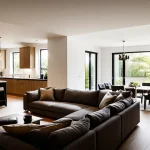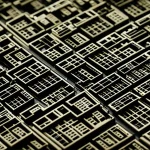Defining Features of Traditional UK Home Architecture
Traditional UK home architecture is marked by its distinct styles, with Victorian homes, Georgian design, and Edwardian influences standing out prominently. Each style reflects different historical periods and cultural preferences in the UK.
Victorian homes, popular in the mid to late 19th century, typically feature decorative façades with intricate brickwork or stone detailing. These buildings often have pitched roofs, commonly steep and gabled, enhancing both aesthetics and functionality in the damp UK climate. Sash windows, characterized by their vertical sliding panels, are a hallmark in Victorian and Georgian designs, providing both elegance and practicality.
Topic to read : What Are the Top Mistakes to Avoid When Designing a Cozy Home Environment?
Georgian design, dating from the 18th to early 19th centuries, is known for its symmetrical proportions and restrained ornamentation. The use of brick and stone in these homes contributes to their solid, stately appearance, with stone often used for decorative lintels and sills. Edwardian architecture, which followed, blends some Victorian intricacy with simpler, more open layouts, but still relies heavily on traditional materials like timber and brick.
Common construction materials unify these styles: brick, stone, and timber form the backbone of traditional UK home structure. Brick offers durability and warmth, while stone lends a sense of permanence and grandeur. Timber is frequently employed in window frames and decorative elements.
Additional reading : How Can Home Design Choices Impact Your Well-being?
External features such as sash windows, pitched roofs, and ornamental façades not only define the visual character of traditional UK home architecture but also reflect practical considerations like climate adaptation and craftsmanship traditions timed by the era’s technological capabilities. The precise use of these features in Victorian homes, Georgian design, and Edwardian houses embodies centuries of evolving architectural trends within the UK.
Signature Interior Characteristics
Traditional UK home interior features often center around fireplaces, wooden beams, and carefully crafted details that blend function with aesthetic charm. Fireplaces stand as the heart of many rooms in Victorian homes and Georgian design, serving both as essential sources of heat and as focal points for family gatherings. These fireplaces are commonly framed with ornate mantels, showcasing period craftsmanship through decorative moldings and stone or woodwork that complement the home’s overall style.
Wooden beams, another distinctive UK home interior feature, frequently appear in ceilings, especially in Edwardian and earlier Georgian houses. These structural elements not only support the roof but also add a rustic warmth and historic character. Alongside beams, coving and wood paneling are used to emphasize room proportions and create elegant transitions between walls and ceilings.
Bay windows and alcoves enhance interior spaces by inviting natural light and creating cozy nooks. These features are widespread in traditional UK home architecture, particularly in Victorian homes, where bay windows often extend living areas outward and offer panoramic views of gardens or streets. Alcoves, often designed to house shelving or seating, combine practicality with decorative appeal, making interiors both livable and visually interesting.
Furnishings and Traditional Decor
Traditional British furnishings are key to reinforcing the character of classic homes. Iconic pieces like Chesterfield sofas and wingback chairs bring both comfort and historic charm, offering timeless silhouettes that are instantly recognizable. These items often feature richly colored leather or floral upholstery, complementing the tactile warmth of period interiors.
Heritage decor relies heavily on intricate patterns and heavy fabrics. Floral upholstery is present not only on seating but also in curtains and cushions, providing a cohesive, cozy atmosphere. Thick curtains, often layered, contribute to insulation and privacy, while rugs with ornate designs ground rooms visually and add to their inviting ambiance.
Displaying heritage decor extends beyond furniture. Traditional British homes frequently showcase artwork, ceramics, and other decorative elements passed down through generations or collected to reflect cultural history. These accessories highlight craftsmanship and storytelling, enriching the narrative of each space.
Together, traditional furnishings, patterned textiles, and carefully curated decorative elements create interiors that celebrate history while enhancing comfort and style. This approach preserves the essence of period homes while allowing for a living environment that feels both authentic and welcoming.
Layout, Function, and Cultural Influences
Traditional UK home layout typically emphasizes clear separation between living, dining, and kitchen spaces. This arrangement reflects both practical needs and social customs rooted in British cultural home design. For example, formal dining rooms were distinct from casual family areas, reinforcing the importance placed on hosted gatherings and meals as cultural rituals.
How does British culture influence home design? It shapes not only room functions but also flow and privacy. In period homes, separate rooms allowed for distinct activities and social hierarchies within the household. Such design gave homeowners control over spaces, accommodating servants or guests while preserving family intimacy.
Preserving and adapting period features has become central to modern renovations of traditional UK homes. Homeowners value original elements like fireplaces, wood paneling, and sash windows for their historical significance and aesthetic appeal. Renovations often integrate these features with updated amenities, marrying heritage decor with contemporary comfort. This balance ensures British cultural values continue to influence how homes function today, combining respect for history with practical living needs.
These design choices illustrate how British cultural home design is more than style; it is a reflection of social history, domestic routines, and evolving lifestyle preferences preserved through architectural and interior decisions.






